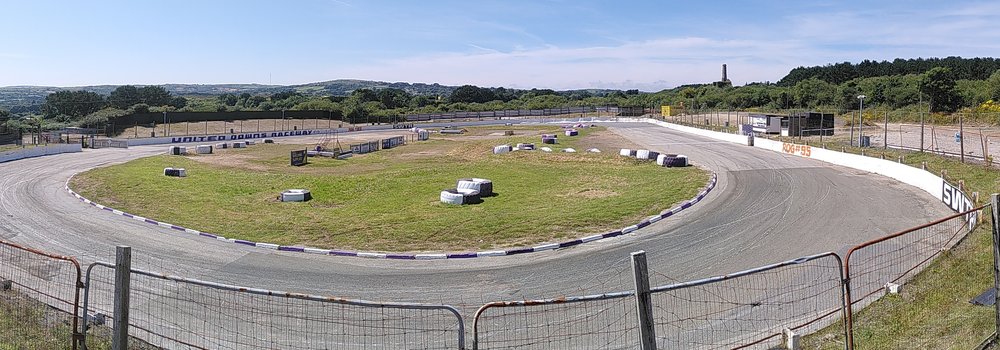A mid-project update, after our first workshop at United Downs Raceway on Wednesday. This site has an incredible history, from being part of the richest mine in the world during the 18th century before being abandoned in the mid 19th century. In 1969 it found a new use as a race track for stock car racing, and secured a special place in the heart of Cornish culture.
These layers of history make it the perfect place to run our Organised Atoms workshop, as it provides a lot of crystals from the mine waste scattered throughout the site, as well as the perfect infrastructure, space and setting for off-grid DIY noisy electronics and mineral identification.
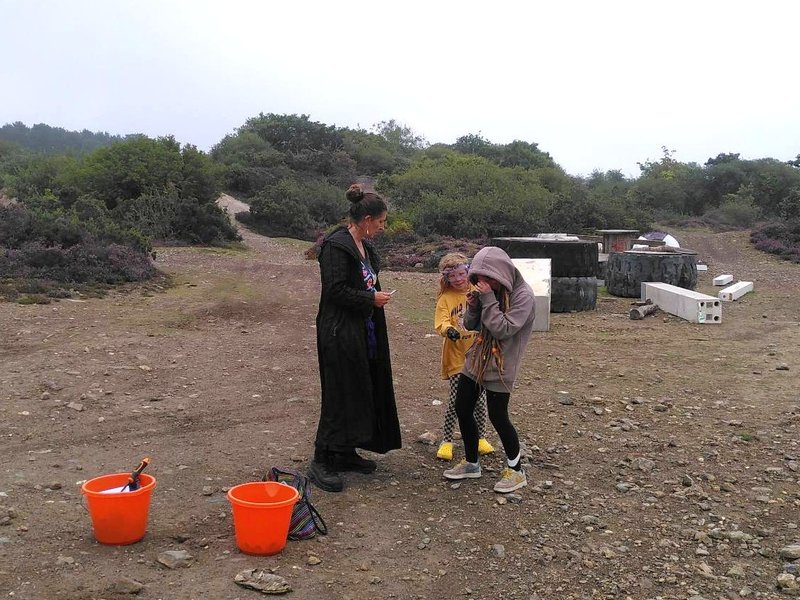
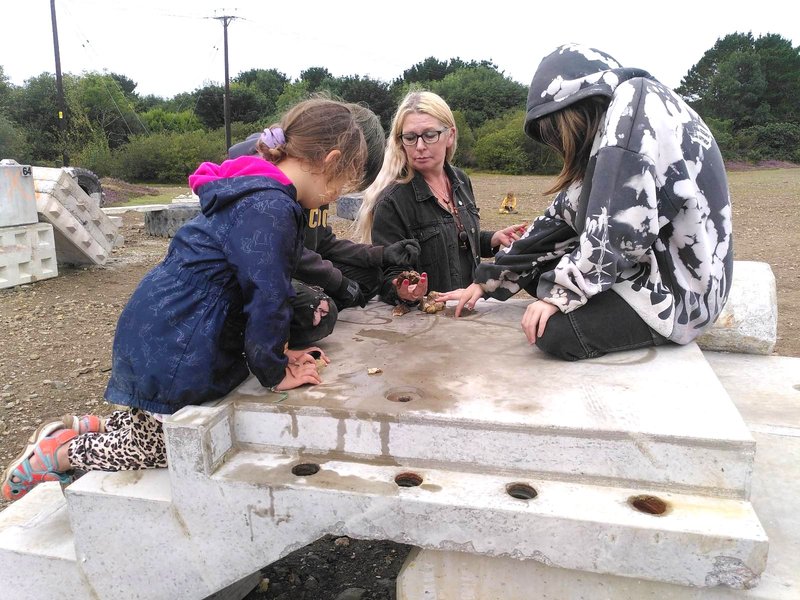
Making use of concrete structures to look at finds (thanks to RPM Displays for the temporary use of their mountain bike stunt park!).
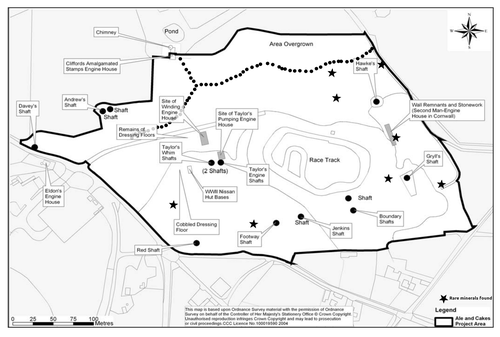
Map of the site from Cornwall Council, including potential places where minerals can be found. We stuck to the southern part as the northern area is densely wooded and quite easy to get lost in!
We split the day into various different activities, starting out by building up a collection of minerals. We searched on the surface in an area where pyrite and quartz seemed abundant. Then we sorted and cleaned our finds and examined them closely in the "rock lab" (the temporarily repurposed race control building) where we had a small example collection for comparison, streak tiles and hardness test kits - and a microscope connected to a screen.
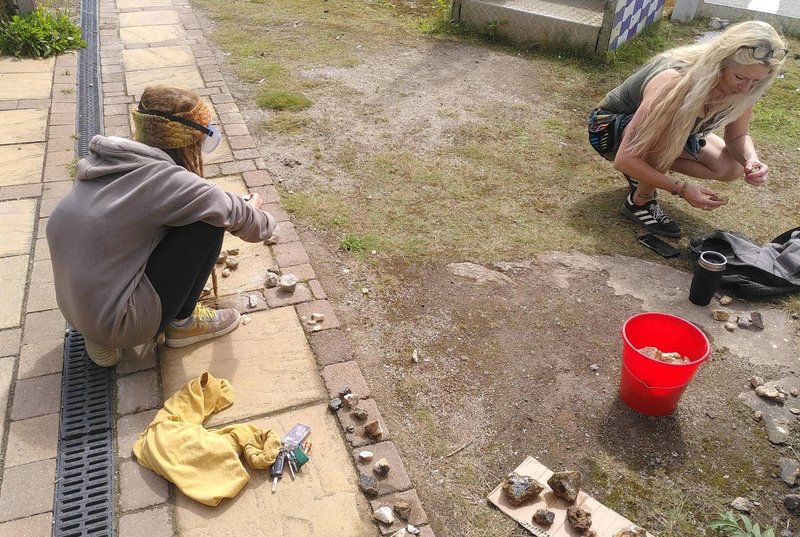
Cleaning, breaking and sorting specimens.
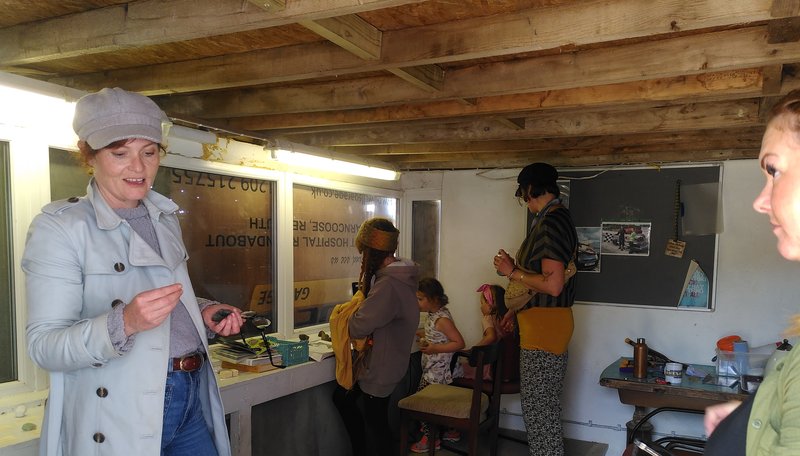
Inside the rock lab.
We managed to identify many minerals including pyrite, chalcopyrite, arsenopyrite, goethite, chlorite, sphalerite, chalcedony and even some suspected native copper (which is extremely rare, but was unfortunately lost on the way back to the rock lab while being carried in someones sleeve!). We also found some huge and well formed quartz crystals. This was more successful than the previous field trip to Poldice mine, probably mostly because there was more space to explore here.
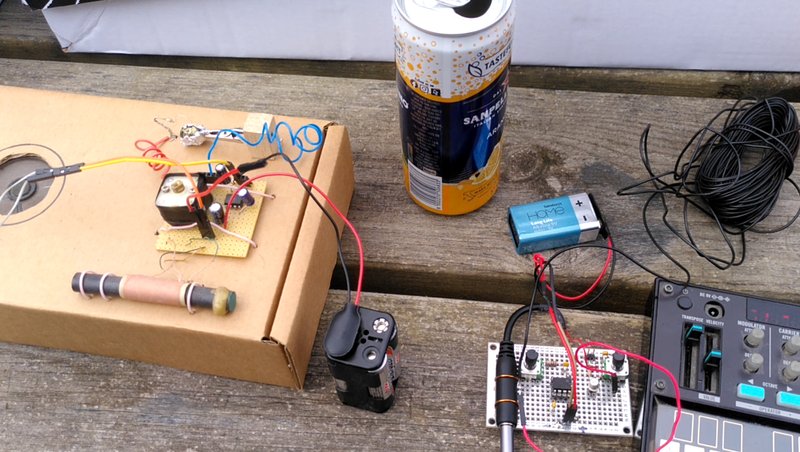
During a pasty break for lunch, and in order to make the link between the minerals we'd been finding and the technology we use - we tried setting up a working crystal radio using a pyrite crystal. This picks up AM radio transmissions, which isn't used very much any more at a strength that will work with this technique - so we also had prepared a simple AM transmitter connected to a small battery powered synth playing a techno bassline.
You could play the synth and hear the sound coming out of the crystal radio "a bit like bluetooth" with the crystal converting the radio frequencies into audible ones. This was a nice practical way to show the historical link from 120 years ago with the discovery of semiconductors, leading to the development of the transistor, and all that has followed.
It also helped set the scene of experimenting with these materials without really needing to know what was going on with them at the atomic level, as it took the scientific community quite a few years after these radios were being widely used to understand how electricity was allowed to move in only one direction between a wire and a crystal.
We then split between two areas, with some people moving on to making circuits on the Cardboard Crystal Synthesiser with some of the crystals we'd found in the VIP cabin overlooking the race track, while others continued cleaning, breaking up and examining their finds in the rock lab.
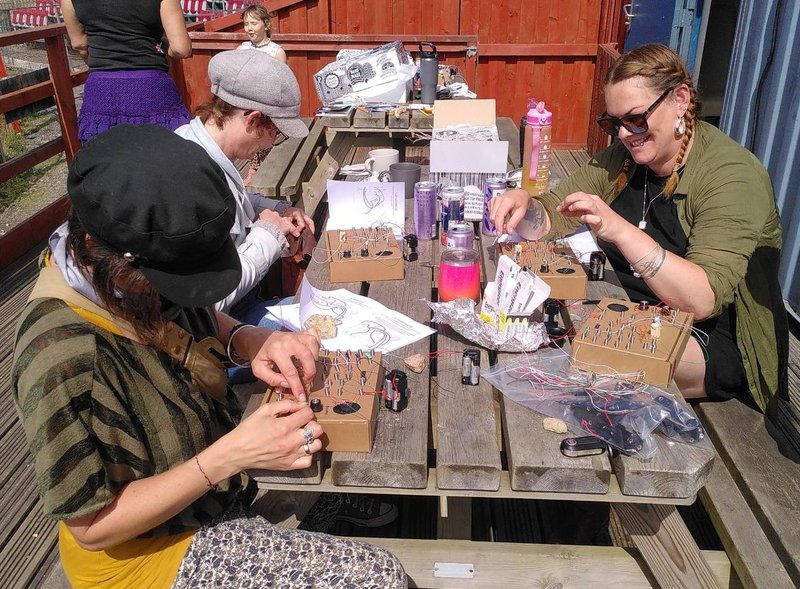
Building circuits in the sun.
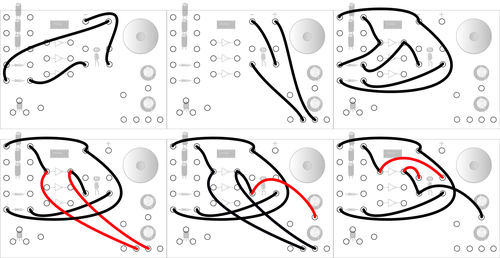
Six of the circuit wiring diagrams, from testing the battery by lighting an LED to making a light controlled sound on the speaker.
At the end, all the families wanted to take their cardboard synthesisers home with them, along with a booklet of info about the site, the history of semiconductors, a lot of circuits to try out, and a list of minerals to help with identification.
Things to improve for the next workshop:
- Bring more brushes and cleaning equipment, along with more buckets (always more buckets).
- Maybe bring a second microscope and additional lighting for making microscope images.
- Try making a record of what we've found, and photograph them and store images from the microscope on the Raspberry Pi.
- Demo a crystal synth circuit (as well as the radio) to show what the end result is - it's easier for some people to know what they are aiming for.
- One of the wiring diagrams was confusing - make it clearer when a wire connects to a spring rather than passing over it.
The site itself was quite a sensory overload for the younger children (at one point one was slowly scooting around the race track with another chasing on a pogo stick). The time available for electronics was shorter than when we gave it a dedicated workshop in a more focused inside location, and so it formed more of a gentle introduction to allow them to do more at home in their own time. We'll be following up on this, but we heard about one of our kits from last year's workshop making it's way into a science fair, as well as another one being taken into school so it's good to know they do have an ongoing life of their own!

